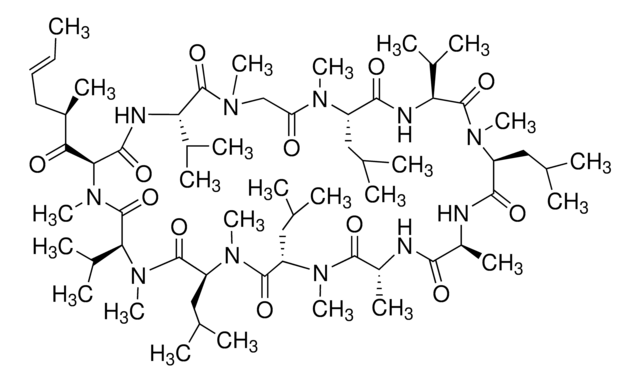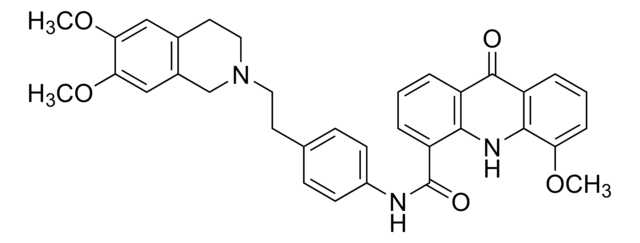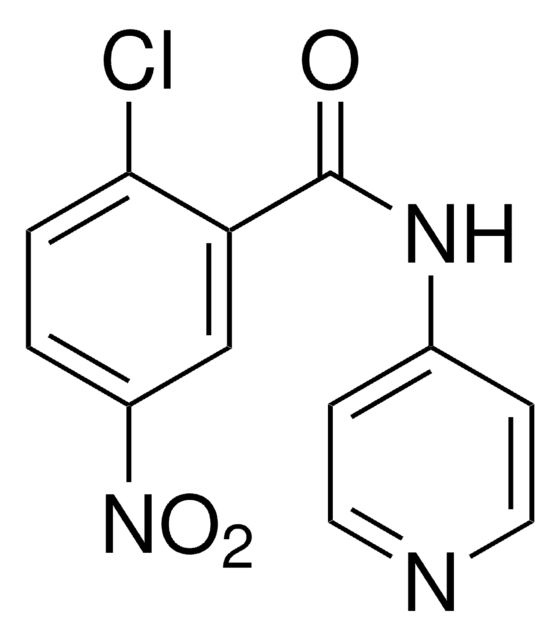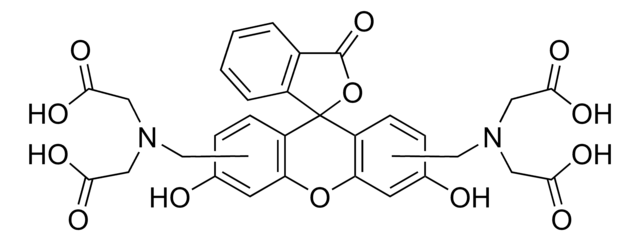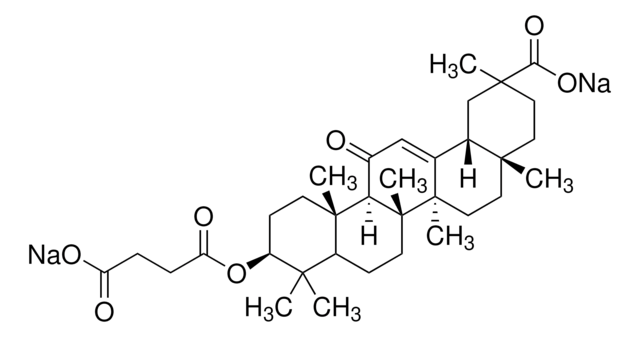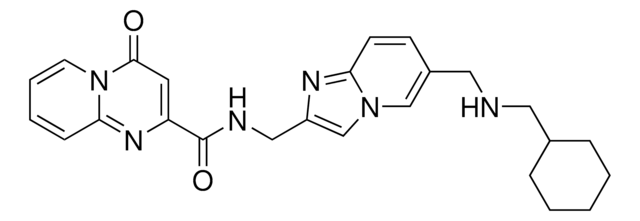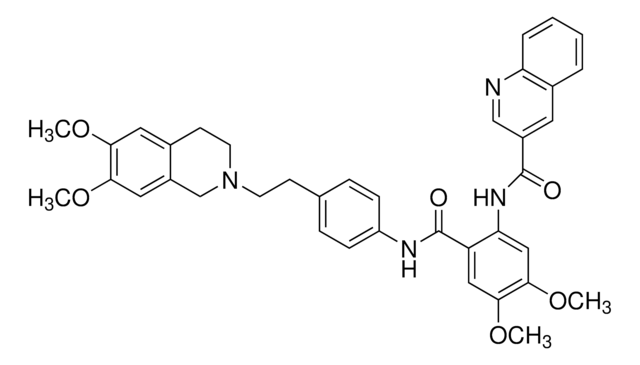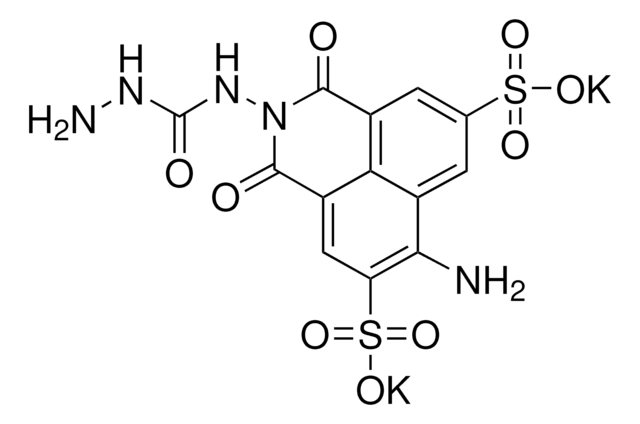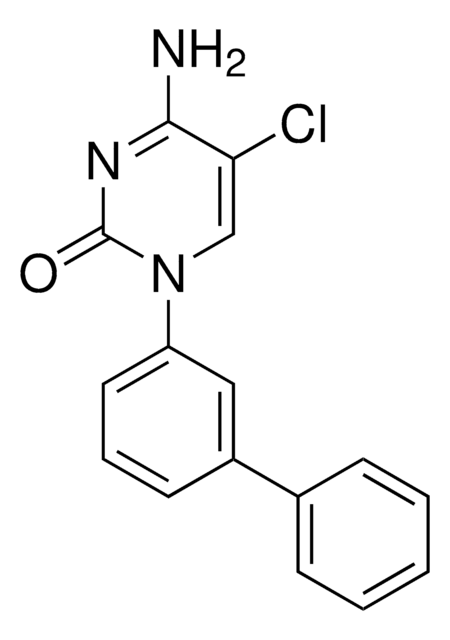推荐产品
生物来源
rabbit
质量水平
抗体形式
purified antibody
抗体产品类型
primary antibodies
分子量
calculated mol wt 15.4 kDa
observed mol wt ~17 kDa
纯化方式
affinity chromatography
种属反应性
human, mouse
包装
antibody small pack of 100 μL
技术
ChIP: suitable
dot blot: suitable
immunofluorescence: suitable
western blot: suitable
同位素/亚型
IgG
表位序列
N-terminal half
Protein ID登记号
UniProt登记号
储存温度
2-8°C
特异性
This rabbit polyclonal antibody specifically detects Histone H3 with butyrlated lysine 27.
免疫原
KLH-conjugated linear peptide corresponding to 10 amino acids surrounding butyrlated lysine 27 of human Histone H3.
应用
Quality Control Testing
Evaluated by Western Blotting in lysates from HCT-116 cells treated with 5 mM Sodium butyrate.
Western Blotting Analysis: A 1:1,000 dilution of this antibody detected Histone H3 butyrlated on lysine 27 in lysate from HCT-116 cells treated with 5 mM Sodium butyrate.
Tested Applications
Immunofluorescence Analysis: A 1:500 dilution from a representative lot detected Histone H3K27butyrl in Mouse cecal sections (Data courtesy of Dr. Leah Gates, Dave Allis Lab @ Rockefeller University, New York).
Chromatin Immunoprecipitation (ChIP) Analysis: 10 µg from a representative lot detected Histone H3K27butyrl in HCT-116 cells (Data courtesy of Dr. Leah Gates, Dave Allis Lab @ Rockefeller University, New York).
Dot Blot: A 1:2,000 dilution from a representative lot detected Histone H3K27butyrl peptide (Data courtesy of Dr. Leah Gates, Dave Allis Lab @ Rockefeller University, New York).
Note: Actual optimal working dilutions must be determined by end user as specimens, and experimental conditions may vary with the end user.
Evaluated by Western Blotting in lysates from HCT-116 cells treated with 5 mM Sodium butyrate.
Western Blotting Analysis: A 1:1,000 dilution of this antibody detected Histone H3 butyrlated on lysine 27 in lysate from HCT-116 cells treated with 5 mM Sodium butyrate.
Tested Applications
Immunofluorescence Analysis: A 1:500 dilution from a representative lot detected Histone H3K27butyrl in Mouse cecal sections (Data courtesy of Dr. Leah Gates, Dave Allis Lab @ Rockefeller University, New York).
Chromatin Immunoprecipitation (ChIP) Analysis: 10 µg from a representative lot detected Histone H3K27butyrl in HCT-116 cells (Data courtesy of Dr. Leah Gates, Dave Allis Lab @ Rockefeller University, New York).
Dot Blot: A 1:2,000 dilution from a representative lot detected Histone H3K27butyrl peptide (Data courtesy of Dr. Leah Gates, Dave Allis Lab @ Rockefeller University, New York).
Note: Actual optimal working dilutions must be determined by end user as specimens, and experimental conditions may vary with the end user.
目标描述
Histone H3 (UniProt: P68431; also known as Histone H3/a, Histone H3/b, Histone H3/c, Histone H3/d, Histone H3/f, Histone H3/h, Histone H3/I, Histone H3/j, Histone H3/k, Histone H3/l) is encoded by the HIST1H3A (also known as H3FA, HIST1H3B, H3FL, HIST1H3C, H3FC, HIST1H3D, H3FB, HISTH3F, H3FD, HIST1H3F, H3FI, HIST1H3G, H3FH, HIST1H3H, H3FK, HIST1H3I, H3FF, HIST1H3J, H3FJ) gene (Gene ID: 8350, 8351, 8352, 8354, 8355, 8356, 8357, 8358, 8968) in human. Histones and DNA assemble to form nucleosomes and each nucleosome organizes a stretch of DNA wrapped around a histone octamer that is composed of a central (H3-H4)2 tetramer, flanked by two H2A-H2B dimers. A large number of variants of Histone H3 have been described in mammals. The two main variants, H3.1 and H3.3, show different genomic localization patterns in animals. They possess distinct histone chaperones, CAF-1 and HIRA, which play important role in mediating DNA-synthesis-dependent and -independent nucleosome assembly. Histone H3.1 serves as the canonical histone, which is incorporated during DNA replication, whereas H3.3 acts as the replacement histone that can be incorporated outside of S-phase during chromatin-disrupting processes like transcription. Histone H3 features a main globular domain and a long N-terminal tail, which protrudes from the globular nucleosome core and can undergo several different types of epigenetic modifications that influence cellular processes. The amino-terminal tails of histone proteins are subject to several posttranslational modifications, including acetylation, methylation, and phosphorylation, which recruit downstream regulatory factors, influence chromatin structure, and are critical determinants of transcription. These modifications on histones, known as histone acyl marks, are involved in transcription regulation. However, the exact role of other modifications, such as propionylation and butyrlation are still under investigation. These modifications are detected at comparable levels to acetylation on selected residues in histone H3. Butyrlation of lysine 9 in histone H3 that occurs in cecal epithelial cells is shown to shown to decrease upon antibiotic treatment. This diminution can be rescued by treatment with exogenous tributyrin. (Ref.: Scott, WA., and Campos, EI. (2020). Front. Cell Dev. Biol. 8; 701; Allis CD., and Jenuwein, T. (20160. Nat. Rev. Genet. 17(8); 487-500).
外形
Purified rabbit polyclonal antibody in buffer containing 0.1 M Tris-Glycine (pH 7.4), 150 mM NaCl with 0.05% sodium azide.
重悬
0.5 mg/mL. Please refer to guidance on suggested starting dilutions and/or titers per application and sample type.
储存及稳定性
Recommended storage: +2°C to +8°C.
其他说明
Concentration: Please refer to the Certificate of Analysis for the lot-specific concentration.
免责声明
Unless otherwise stated in our catalog or other company documentation accompanying the product(s), our products are intended for research use only and are not to be used for any other purpose, which includes but is not limited to, unauthorized commercial uses, in vitro diagnostic uses, ex vivo or in vivo therapeutic uses or any type of consumption or application to humans or animals.
WGK
WGK 1
闪点(°F)
Not applicable
闪点(°C)
Not applicable
法规信息
新产品
我们的科学家团队拥有各种研究领域经验,包括生命科学、材料科学、化学合成、色谱、分析及许多其他领域.
联系技术服务部门